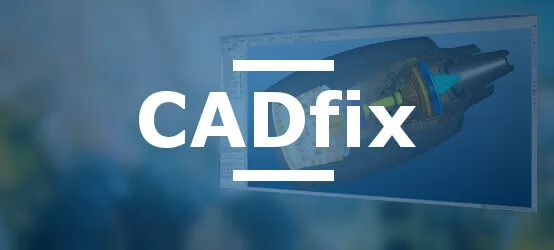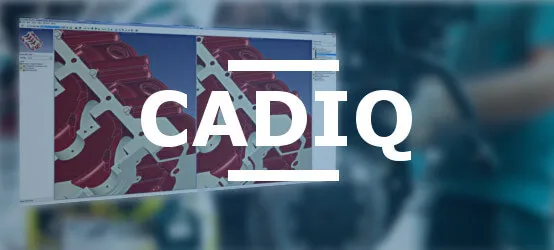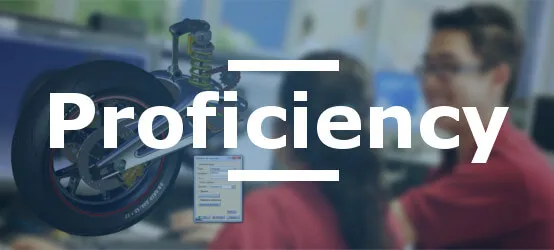3D CAD data migration represents a major challenge for industrial companies facing the replacement of their design systems. In a context where manufacturing companies lose millions each year due to migration failures, mastering this transition becomes strategic. Moving from one CAD system to another involves not only data transfer but also preserving the integrity of 3D models that constitute the company's digital heritage.
In 2025, as digital transformation accelerates across all industrial sectors, the ability to efficiently migrate 3D CAD data becomes a decisive competitive advantage. This migration directly impacts operational continuity, collaboration with partners, and the company's innovation capacity.
Table of contents
- Understanding 3D CAD data migration
- Technical challenges of CAD migration
- Triggers for CAD migration
- Operational impact of poorly prepared migration
- Effective methodologies for CAD migration
- CADfix: complete solution for geometric conversion with repair
- Data validation after migration
- Best practices and experience feedback
Understanding 3D CAD data migration
3D CAD data migration refers to the complete process of transferring design models and information from a source CAD system to a target CAD system. This approach goes well beyond simple file conversion and involves a global strategy to preserve the integrity and intelligence of models.
There are two main migration approaches:
- Geometric migration (BREP conversion): transfers only the geometry of models without preserving the construction history
- Design intelligence migration: preserves the construction history, constraints, and feature tree
In this article, we will focus on geometric migration and associated repair methods. The typical lifecycle of a migration project goes through several phases: initial audit, strategic planning, technical execution, and final data validation.
This migration directly influences the company's digital continuity - this uninterrupted information chain that connects all players in the product lifecycle. A break in this chain can have significant consequences on productivity and product quality.
Technical challenges of CAD migration
3D CAD data migration faces several technical obstacles that make this process particularly complex:
Disparities in geometric representation
Each CAD system has its own way of mathematically representing surfaces and solids. These fundamental differences can lead to incompatibilities when transferring models, particularly for complex geometries such as:
- Twisted or degenerated surfaces
- Geometries with complex blends
- Models with numerous small geometric entities
Tolerance and precision issues
CAD systems use different tolerances to define:
- The precision of points and curves
- Assembly tolerances
- Acceptable deviations between theoretical and actual surfaces
These differences in precision can generate significant problems during migration, such as unconnected surfaces or discontinuous edges.
Diversity of modeling practices
Design teams develop working methods specific to their CAD system. These practices may include:
- Software-specific modeling techniques
- Operation sequences optimized for a particular system
- Specific assembly structuring methodologies
This diversity makes it difficult to preserve design intent when migrating to another system.
Triggers for CAD migration
Several events can lead an organization to consider migrating its CAD systems:
Post merger-acquisition consolidation
Following a merger or acquisition, companies often find themselves with multiple CAD systems inherited from different entities. This situation leads to tool harmonization to optimize costs and facilitate inter-team collaboration.
Legacy system obsolescence
Aging CAD systems can present several risks:
- Discontinuation of technical support by the vendor
- Incompatibility with new operating systems
- Inability to integrate recent innovations (AI, cloud, etc.)
Cost reduction and process optimization
License rationalization and standardization of engineering processes are frequent motivations for undertaking CAD migration. This approach allows:
- Reducing maintenance and support costs
- Simplifying team training
- Improving interoperability with other information systems
Operational impact of poorly prepared migration
A poorly executed CAD migration can have significant consequences on the company's operations:
| Impact | Consequences |
|---|---|
| Development delays | Extended design cycles, product launch postponements |
| Loss of critical data | Disappearance of constraints, unintentional modifications to models |
| Quality decrease | Manufacturing errors, assembly problems, aesthetic defects |
| Additional costs | Model rework time, manual error correction |
The hidden costs of a poorly prepared migration can far exceed the planned initial investment. According to several industrial analyses, companies frequently underestimate by 40% to 60% the resources needed to manage the consequences of a defective migration.
Furthermore, the disorganization of collaborative processes can create tensions between departments and affect team confidence in the newly deployed tools.
Effective methodologies for CAD migration
A successful migration relies on a rigorous methodology that includes several key steps:
Strategic approach in four phases
- Initial audit: data inventory, assessment of modeling practices, identification of critical models
- Planning: priority definition, schedule development, resource allocation
- Technical execution: data conversion, model repair, progressive validation
- Deployment and final validation: production implementation, user training, anomaly monitoring
Priority management based on model criticality
Not all CAD models have the same importance in the company's digital heritage. It is crucial to establish a hierarchy based on:
- Current and future use of models
- Geometric complexity and development history
- Impact on products under development
- Links with other systems (PDM, PLM, ERP)
Testing and validation strategies
Implementing a rigorous validation process is a key success factor. This process must include:
- Tests on a representative sample before mass migration
- Clear and measurable acceptance criteria
- Geometric comparison mechanisms between source and target models
- Non-conformity management protocol
CADfix: complete solution for geometric conversion with repair
Facing CAD migration challenges, CADfix positions itself as a specialized solution for geometric conversion with automated repair.
Solution overview
CADfix is a CAD geometry conversion and repair software developed since 1986. It improves CAD data interoperability in downstream applications and significantly reduces processing times for data repair.
The solution is distinguished by its capabilities to:
- Import and export to multiple native and neutral CAD formats
- Automatically repair common geometric problems
- Simplify overly complex models for downstream applications
- Apply industry-recognized quality standards
Key features for migration
CADfix offers a set of tools specifically adapted to migration needs:
Extended compatibility with CAD formats
The solution supports a wide range of formats including:
- Native formats: CATIA V5 (up to V5-6 R2024), CATIA V4, ProE/Creo (up to CREO 10), NX, SolidWorks (up to 2024)
- Neutral formats: STEP (AP203, AP214, AP242), IGES, Parasolid (up to v37.0), ACIS (up to 2024 1.0.1 R34)
- Other specialized formats: JT, STL, VDA-FS, FBX, gLTF
Advanced repair tools
CADfix has more than 100 topological and geometric repair tools to automatically correct:
- Twisted, warped, or degenerated surface issues
- Micro-entities (short edges and small faces)
- Intersection and connection errors
- Holes on faces and solids (through or blind)
Operating modes adapted to needs
The solution offers several usage modes:
- Automatic mode: fully automated process with intelligent repair through macros
- Batch mode: automatic processing of multiple files, ideal for mass migrations
- Guided semi-automatic mode: automatic analysis with diagnostic tree and correction proposals
- Advanced manual mode: access to all tools for complex cases requiring expertise
Specific technical advantages
Using CADfix in a migration process offers several concrete benefits:
| Advantage | Business impact |
|---|---|
| Process automation | 60% to 80% reduction in model preparation time |
| Preservation of geometric precision | Maintaining model accuracy for manufacturing and analysis |
| Batch processing | Ability to process thousands of models without manual intervention |
| Certification to industry standards | Compliance with JAMA, SASIG and other quality reference frameworks |
Implementation process
Integrating CADfix into a migration project typically follows these steps:
- Analysis of specific needs and customized configuration
- Definition of processes and workflows adapted to the company context
- Tests on a representative sample of models to adjust parameters
- Progressive deployment with possible integration into existing PLM systems
- Team training and skills transfer
The solution can be used in standalone mode or integrated into automated conversion servers like DEXcenter for large-scale deployments.
Data validation after migration
Data validation is a critical step in the migration process. It ensures that converted models retain their essential characteristics and can be used with confidence by downstream teams.
Importance of independent validation
To ensure process objectivity, it is recommended to implement validation independent of the team responsible for conversion. This approach allows:
- Eliminating potential biases in results evaluation
- Establishing a rigorous quality control process
- Formally documenting the compliance of migrated data
Geometric comparison methods
Several techniques allow comparing source and target models:
- Visual comparison: useful for initial assessment but insufficient for rigorous validation
- Physical property analysis: comparison of masses, volumes, centers of gravity and moments of inertia
- Surface comparison: analysis of dimensional deviations between corresponding surfaces
- Assembly verification: checking interferences and functional clearances
Specialized tools like CADIQ (from the same family as CADfix) can automate these comparisons and generate detailed reports.
Quality indicators to monitor
For complete validation, several metrics must be checked:
| Indicator | Typical acceptability threshold |
|---|---|
| Volume deviation | < 0.1% |
| Maximum surface deviation | < 0.01 mm |
| Center of gravity displacement | < 0.1 mm |
| Moment of inertia deviation | < 0.5% |
These thresholds must be adapted according to the specific requirements of the application domain (aerospace, automotive, medical, etc.).
Best practices and experience feedback
Successful migration projects generally share several key success factors:
Progressive and controlled approach
- Start with a pilot project on a limited scope
- Capitalize on feedback to optimize the process
- Define intermediate milestones with formal validation
Involve end users
The buy-in of technical teams is essential for successful migration:
- Involve designers in defining requirements
- Train teams ahead of deployment
- Implement dedicated support during the transition phase
Common mistakes to avoid
Several pitfalls can compromise the success of a migration project:
- Underestimating complexity and necessary resources
- Neglecting the validation and testing phase
- Attempting to migrate all models at once
- Omitting documentation of processes and technical decisions
Examples of successful migrations
Many industries have successfully conducted large-scale CAD migration projects:
- In the aerospace sector, equipment manufacturers have successfully migrated tens of thousands of complex models while maintaining production continuity
- In automotive, manufacturers have harmonized their CAD systems following mergers while preserving the integrity of critical models
- In the capital goods sector, manufacturers have modernized their tools while maintaining access to decades of technical archives
Conclusion
3D CAD data migration represents a major technical and organizational challenge for industrial companies. It requires a methodical approach combining technical expertise, strategic planning, and specialized tools like CADfix.
The benefits of successful migration are considerable: cost rationalization, improved collaboration, accelerated development cycles, and preservation of the company's digital heritage.
In an industrial context where digital continuity is becoming a strategic issue, investing in reliable processes and tools for CAD migration constitutes not an expense but an investment in the company's sustainability and competitiveness.




